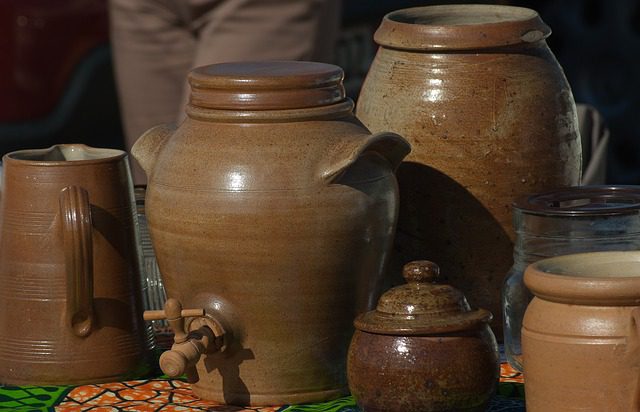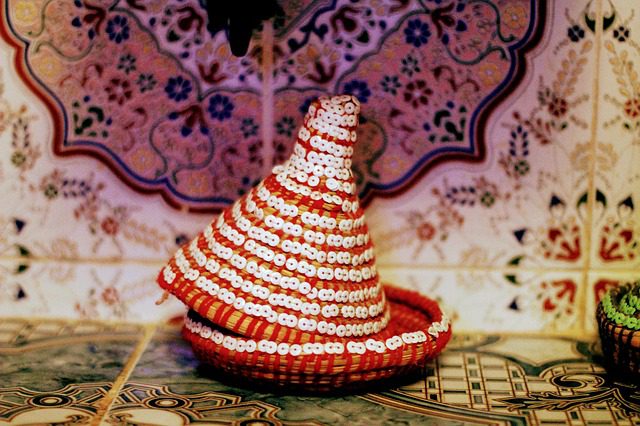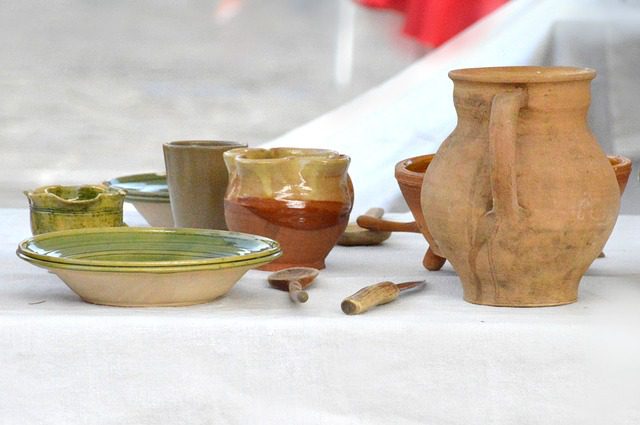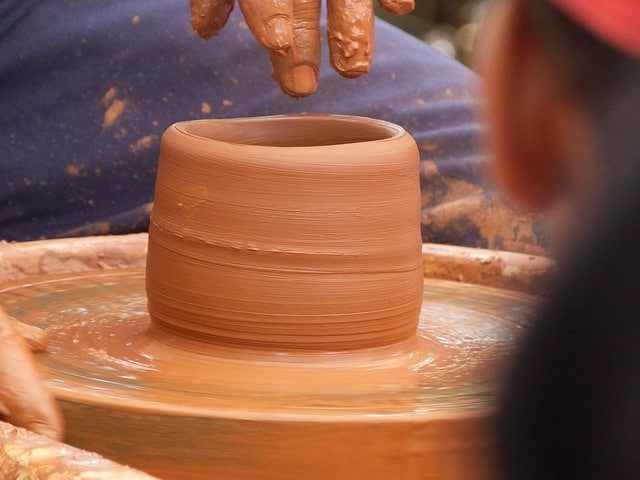Do you have a garden at your home? How about potted plants in your garden? If so, you likely know about terracotta. Terracotta is a kind of clay-like material used for pottery. It is used to make cooking vessels, flower pots, bricks, and even sculptures. Terracotta is one of the most oldest material used to make cooking vessels out there, going back right to 24,000 BC. Made of pottery clay, many individuals till date keep on utilizing it for slow cooking, stewing, and broiling because of its extraordinary properties of retaining warmth, moisture, and nutrients well. Terracotta cookware is also very inexpensive in comparison to stainless steel.
Love handi biryani? A biryani is typically made in a handi (round bottommed vessel) which is made from terracotta. A handi can be used to make meat based dished and slow cooked dals and rice too.
Table of Contents
What is Terracotta?
Terracotta is a rosy/brownish earthy colored hued pottery mud. The shade of terracotta earthenware may go from natural shades of brown to reds. Terracotta or ‘baked earth’ is used to make sculptures and cookware.
Terracotta Cookware
Terracotta Cookware comes from an Italian word meaning “baked earth”. It is a type of earthenware that is characterized by its different shade of color which is brown-orange.
This type of fired clay is ideal for long cooking over slow fire. Earthenware pots are perfect for stewing, slow cooking, baking, boiling, and baking. (Thinking of aromatic biryanis, are we?) Earthenware vessels can be utilized to serve directly from the stove and directly to the dining table.

Earthenware is perfect for preparing meticulous dishes, since it disseminates heat equitably, helping to make food that is cooked through to perfection. Generally, pizzas are cooked in brick ovens. Permeable earthenware draws moisture from the batter, creating an ideal mode for cooking.
What You Need To Know Before Using Terracotta Cookware
- Wash your terracotta cookware with boiling water before using it. Try not to use any detergent or dishwashing liquid as they may clog the fragile pores of the cookware and alter the flavor of the food prepared in them.
- Unglazed earthenware needs a good soak in water for around 15 minutes before each usage. The earthen cookware can absorb water, which will evaporate gradually from the pores during cooking.
- When you start cooking, place the terracotta cookware in a cold oven. Start with low heat and gradually increase the heat. By doing this, you will prevent breakages in the cookware.
- Cooking in earthen cookware requires higher levels of heat than other cookware. Food needs longer time to prepare too.
- To ensure that your earthenware cookware is made of good quality mud, buy from trustworthy sellers.
Most Common Types of Terracotta Cookware

1. Tagine
Tagine is a Moroccan moderate cooker with a wide, shallow base and a high tapered cover. The elongated lid of the tagine allows steam to condense and fall back into the food, keeping it from drying out. Tagines can be utilised to make couscous, stews, rice and beans. Most tagines can likewise go straight from the stove to the table for serving.
2. Clay Baker
Clay and stone in general are incredible for preparing and cooking. Breads and baked goods made in a clay baker will retain moisture and not dry up too fast. It is preferred to use the cold-start method for an evenly baked bread.
3. Cazuela
Cazuela are glazed clay cooking dishes. Cazuela is a shallow round pot that can be found commonly in Spain. These adaptable cooking pots are typically coated with ceramic and available in a variety of sizes. They can be used for cooking in an oven, over a gas stove/fire, and in the microwave. Cazuelas can be used for making soups and stews. Its heat retaining properties help keep the food warm for quite a while. Just like a tagine, it can be brought straight to the table too.
4. Micaceous Clay
Cookware made with this clay has a stunning sheen, so it is typically left unglazed. It comes in numerous varieties like pots, skillets, and containers. Like other earthenware cookware, it retains heat very well and can even be used over direct fire.
Advantages Of Cooking In Terracotta Cookware
In earlier times, terracotta cookware was a constant in Indian kitchens. From storing food to cooking food, women managed it all with earthenware pots but now it is rarely seen in any regular kitchen. Despite the availability of many fancy cooking utensils, it looks like it’s time to get back to the good old ones, thanks to the many benefits. The food prepared in earthen pots is high in iron, calcium, and magnesium which play a significant role in the betterment of a human body. Cooking in earthen pots can help retain the moisture of the food and prevent it from drying out easily.
Let’s look at a advantages of cooking in terracotta cookware –

1. Maintains The Nutrition Value
Due to moderate heat levels used during cooking, earthen pots retain moisture and heat. The heat circulates throughout the food evenly and help in maintaining the nutrition level of the dish. In metal utensils, this might get lost. This especially stands true while cooking meat based dishes. The meat becomes delicate and tender when cooking in an earthen utensil.
2. Balance Of pH Level
Due to the alkaline nature of clay pots, the pH of acidic foods neutralises making the food healthier for consumption.
3. Acts As A Multi-Purpose Vessel
Terracotta cookware is perfect for an assortment of cooking procedures like heating, bubbling, browning, broiling, stewing, and slow (dum) cooking. Earthenware vessels are perfect to use on various cooking methods.
4. Keeps Food Healthy And Safe
Cooking in terracotta cookware is beneficial because it uses lesser oil in comparison to steel vessels. The food retains its natural juices due to the delicate cooking method used. Moreover there is lesser nutritive loss while using a terracotta vessel.
Having said that, some low-quality earthenware cookware can have toxic coatings. The key is to choose from reputable organisations to ensure good quality utensils.
5. Healthy For The Heart
Excess use of oil for cooking is one of the main sources of weight gain which ultimately lead to heart and liver problems. These pots take more time to warm up and use a slow cooking process, which also help hold the moisture and regular oils in the food.
6. Environment Friendly
Terracotta cookware is considered eco-friendly cookware since it doesn’t leave as much carbon impression in comparison to other metal-cookware. Moreover they are biodegradable!
7. Pocket Friendly
Terracotta cookware is easily accessible in even the remotest parts of the nation. They come in various shapes and sizes and are extremely inexpensive when compared to stainless steel or hard anodised aluminium cookware.
How To Maintain Terracotta Cookware?
Terracotta cookware has a huge list of benefits but they require much more maintenance than any other utensil. Let’s find out how.
Fragility
Dropping or knocking it against hard surfaces can break earthenware cookware. Abrupt and erratic temperature changes can make them split too. It is advised to soak your terracotta cookware in water for 15 minutes before you start cooking in it. Make sure you begin cooking on low heat and gradually increase it.

Temperature and Time Adjustments
Earthenware pots warm up gradually and require a slow cooking method to achieve even cooking. Make sure you start earlier than your usual cooking time to ensure proper time management. As the pot keeps on cooking even after taken off the heat, due to its heat retaining qualities, switch off the burner in advance to avoid overcooking.
Cleaning Of Terracotta Cookware
Utensils made of clay are porous and can absorb strong flavors like garlic, chillies and pepper. Never clean your terracotta cookware with a detergent or a dishwashing liquid, as the food you cook in that utensil will start tasting like a cleanser. To clean terracotta cookware, use hot water and a brush to get out the grease and grime.
Disadvantages Of Terracotta Cookware
Some f the disadvantages of terracotta cookware are discussed below –
- Earthenware cookware cannot withstand unexpected, sudden temperature changes. Going from a hot stove, straight under cold water can cause the cookware to split.
- Earthenware pots need to be warmed up gradually before being set on an electric or gas stove.
- Cookware made of unglazed earthenware is porous and retain strong food smells and flavors.
Conclusion
Terracotta cookware is a good choice for your kitchen as it cuts down the oil consumption which is very good for the heart and adds an earthly flavor and aroma to your dish. It is also very pocket friendly which is not in the case of hard anodised or stainless steel cookware.
So if you are looking to buy terracotta cookware, weigh in the advantages and disadvantages before making a purchase.


